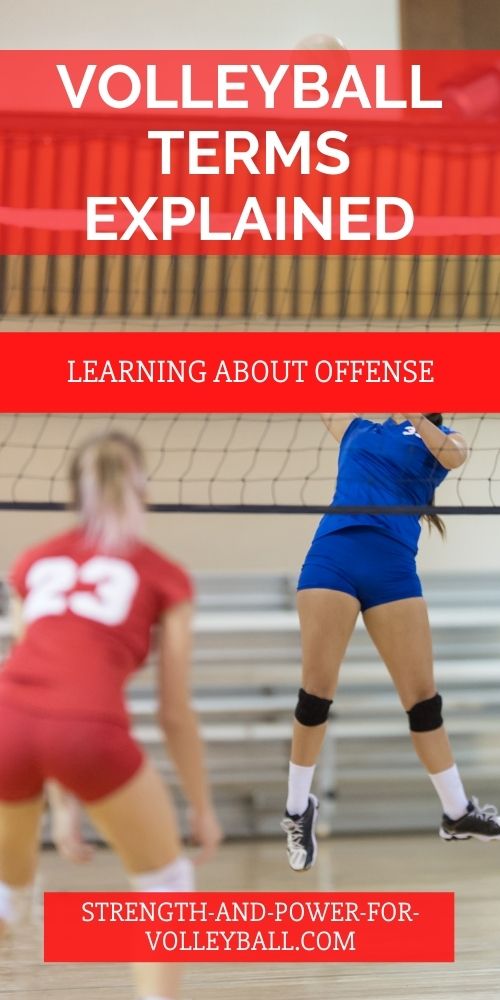Volleyball Offense
Terms for Sets and Offensive Systems
Volleyball offense terms for running volleyball plays.
Types of Sets
Four
A four set is a set that goes high to the outside hitter.
Two
A two set is a set in the middle of the court at net, usually to the middle hitter.
One
A one set is a quick set to the middle.
Three
A three set is a quick set about half way between the outside and middle.
Five Set
A five ball is a back set to the right side hitter.
Ten
A ten is a set that's set to a back row attacker. The ball is set to be
attacked near the 3 meter attack line (10 foot line).
A 10 is also called setting the pipe.
Offensive Plays
Outside Shoot
An outside shoot is a quick set to the outside hitter.
32
A 32 is a ball that's set half way between the outside and middle. The height of the set is about the same as a two ball.
Flare
A flare is when an attacker uses an inside-out path to attack an outside
set. A teammate commonly runs a quick fake to trick the opponents, then
the attacker flares out to attack.
Slide
A slide is a running approaching, with the attacker leaping off one foot.
Isolation Play
An isolation play is a play designed to use an attacker as a distraction
to draw in opposing blockers. This diversion can give a teammate a
chance to attack against a single blocker.
Combination Plays
Tandem
A tandem play in volleyball is when one player follows behind the other
when attacking. An example of a tandem is having a middle hitter
approach for a one set with the outside hitter approaching to hit a two
set. This is usually done with the outside hitter approaching behind or
right next to the middle hitter.
Tandems often confuse opponents because it is difficult to stay with both attackers, often forcing blockers to make a guess on which hitter to stay with.
Double Quick
A double quick is when two hitters approach to hit quick sets. A middle hitter approaching to hit a front one and a right side hitter approaching to hit a back one is a double quick.
X Play
An X or Cross is when hitters approach to hit crossing one
another's paths. A middle approaching to hit a front one and the right
side player coming around to hit a front two is an example of an X or cross.
Offensive Systems
Four-two Offense
A 4-2 offense is the most basic volleyball offensive system. A 4-2 offense is a 6-player offensive system that uses four hitters and two setters. The setters play in rotations opposite one another so one of them is always on the front row.
Which ever setter is on the front row is the one that sets in that particular rotation, so the setter has the option of setting one of the two front row attackers.
A 4-2 is much less complicated than other volleyball offensive systems because it's much easier for the setter to get in position to set. Also, the line up for serve receive is much less complicated than running a 5-1 or 6-2.
Five-one Offense
A 5-1 offense is a 6-player offensive system that uses one setter and five hitters. The setter sets in every rotation. When on the front row, the setter has the option of attacking when running a 5-1 volleyball offense.
Six-two Offense
A 6-2 offense is a 6-player offensive system that uses two setters and six hitters. The setters play in rotations opposite one another so one of them is always on the back row. Which ever setter is on the back row is the one that sets in that particular rotation, so the setter has the option of setting one of three front row attackers.
If you enjoyed these tips and would like to keep it close to you at any time, just save this pin to your Pinterest Volleyball Training Board.
Volleyball Offense Related Pages
Running a 4-2 Serve Receive Offense
Running a 5-1 Serve Receive Offense
Basics of the Volleyball SpikeVolleyball › Volleyball Terms › Offensive Terms

